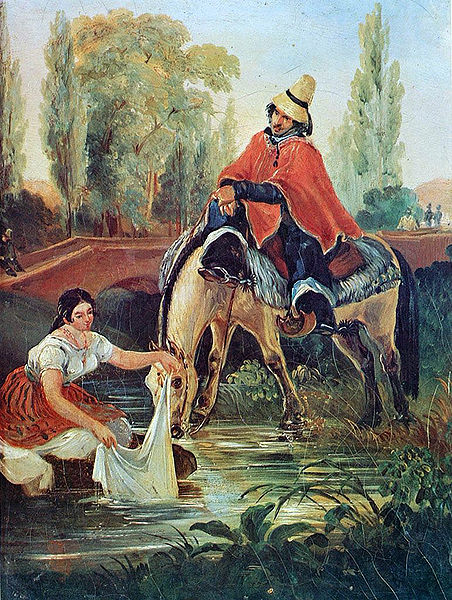Text and Image in Spanish America
In 2010 Spanish America will begin celebrating the bicentenary of political independence from Spain. The anniversary of this foundational event is already prompting much debate and reflection about the region’s future, and the relationship between the past and the present. As the government commission created in Chile to commemorate the bicentenary observed, the approaching anniversary ‘prompts many questions about our past, about our future, about who we are and what we want to be nationally and regionally’. This two-year research project, funded by the Leverhulme Trust, creates an interdisciplinary research network to examine the emergence of self-defined nations and the creation of national identities in Spanish America during its first century of independence. The network brings together scholars from the UK, Europe, Spanish America and the USA studying diverse but related aspects of the region’s history and culture, and encourages the exchange of both knowledge and methodologies.
The last ten years have seen a renaissance of innovative research into the interconnections between cultural production, practices of governance, and political space in nineteenth-century Spanish America. It is now clear that ideas about the contours of the nation and the character of its citizens are embedded in artefacts ranging from novels and historical texts to the design of civic festivals and public architecture, as well as in maps, paintings and popular prints, all of which have been the object of recent attention from researchers working in a variety of disciplines. Nineteenth-century maps and geographical surveys, for example, have been subjected to analysis by historians and geographers, as well as art historians. By bringing together scholars who study the same sources from different disciplinary perspectives this network facilitates the development of interdisciplinary connections between scholars pursuing research into nineteenth-century nation-formation. It also encourages comparative, transnational approaches that explore the similarities and differences between the development of nationalism in the different Spanish American republics.
These collaborative activities underscore the continuing resonance of the iconographies and national images constructed in the nineteenth century within twenty-first-century nationalism. Together they provide an opportunity to consolidate rich and varied individual research agendas on nineteenth-century Spanish American nationalism into a broad network of scholarship that should help shape understandings of Spanish America’s first century of independence, as well as addressing the enduring significance of nineteenth-century mentalities in twenty-first century Spanish America.
In addition to opening new lines of communication between Spanish Americanists in the fields of nineteenth-century history, literature, art history and geography, the network will sponsor three international workshops on texts and images in nineteenth-century Spanish America:
Workshop 1: Writing the Republic: Historical Writing in Nineteenth-Century Spanish America, University of Warwick, 7-8 November 2008
Workshop 2: Seeing the Nation: Art and Imagining in Nineteenth-Century Spanish America, Firstsite (Rafael Viñoly Visual Arts Space), University of Essex, 18-19 September 2009
Workshop 3: Mapping and the Nationalist Imagination Universidad de los Andes, Colombia, August 2010

For further information please contact:
Rebecca Earle: R.Earle@warwick.ac.uk
or
Helen Cowie: h.l.cowie@warwick.ac.uk
